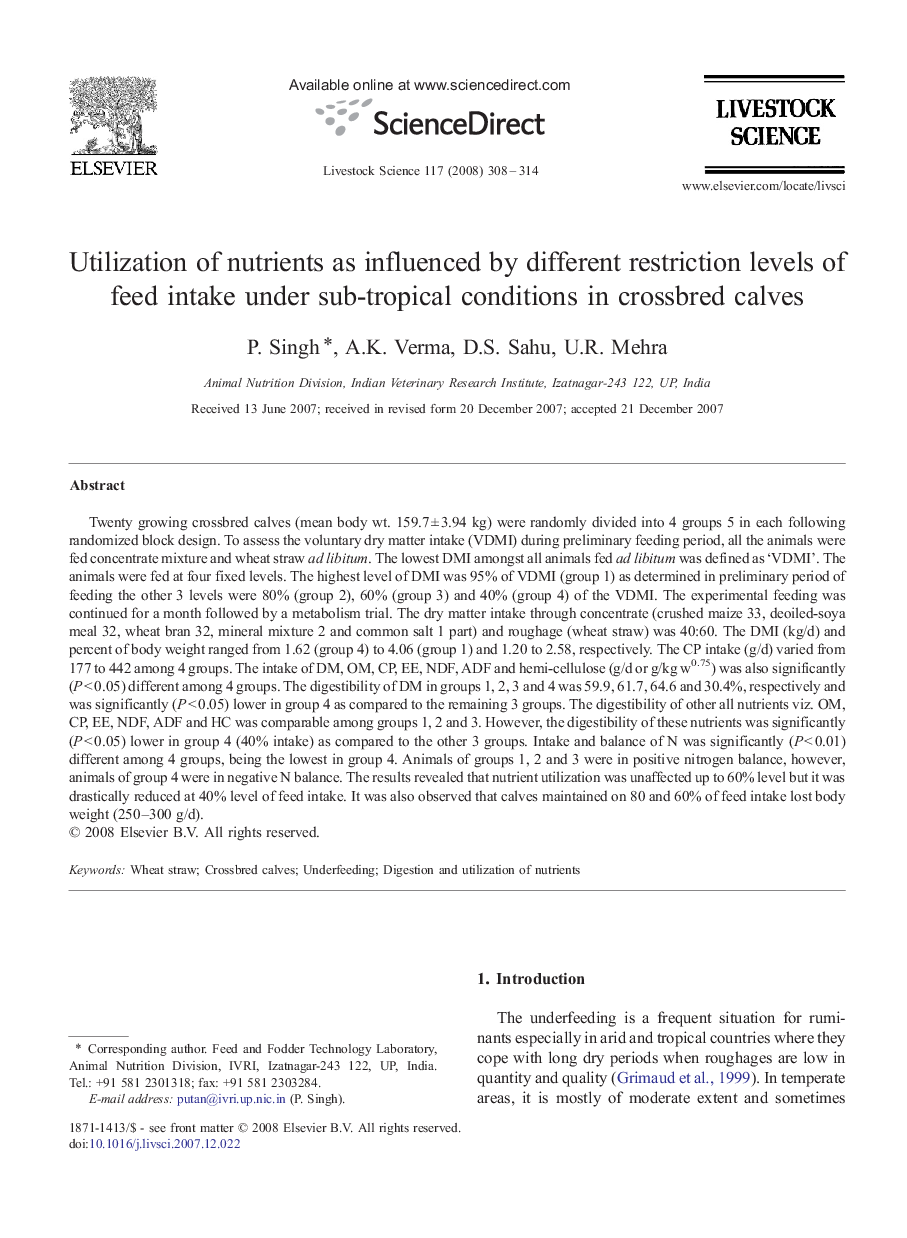| Article ID | Journal | Published Year | Pages | File Type |
|---|---|---|---|---|
| 2448369 | Livestock Science | 2008 | 7 Pages |
Twenty growing crossbred calves (mean body wt. 159.7 ± 3.94 kg) were randomly divided into 4 groups 5 in each following randomized block design. To assess the voluntary dry matter intake (VDMI) during preliminary feeding period, all the animals were fed concentrate mixture and wheat straw ad libitum. The lowest DMI amongst all animals fed ad libitum was defined as ‘VDMI’. The animals were fed at four fixed levels. The highest level of DMI was 95% of VDMI (group 1) as determined in preliminary period of feeding the other 3 levels were 80% (group 2), 60% (group 3) and 40% (group 4) of the VDMI. The experimental feeding was continued for a month followed by a metabolism trial. The dry matter intake through concentrate (crushed maize 33, deoiled-soya meal 32, wheat bran 32, mineral mixture 2 and common salt 1 part) and roughage (wheat straw) was 40:60. The DMI (kg/d) and percent of body weight ranged from 1.62 (group 4) to 4.06 (group 1) and 1.20 to 2.58, respectively. The CP intake (g/d) varied from 177 to 442 among 4 groups. The intake of DM, OM, CP, EE, NDF, ADF and hemi-cellulose (g/d or g/kg w0.75) was also significantly (P < 0.05) different among 4 groups. The digestibility of DM in groups 1, 2, 3 and 4 was 59.9, 61.7, 64.6 and 30.4%, respectively and was significantly (P < 0.05) lower in group 4 as compared to the remaining 3 groups. The digestibility of other all nutrients viz. OM, CP, EE, NDF, ADF and HC was comparable among groups 1, 2 and 3. However, the digestibility of these nutrients was significantly (P < 0.05) lower in group 4 (40% intake) as compared to the other 3 groups. Intake and balance of N was significantly (P < 0.01) different among 4 groups, being the lowest in group 4. Animals of groups 1, 2 and 3 were in positive nitrogen balance, however, animals of group 4 were in negative N balance. The results revealed that nutrient utilization was unaffected up to 60% level but it was drastically reduced at 40% level of feed intake. It was also observed that calves maintained on 80 and 60% of feed intake lost body weight (250–300 g/d).
